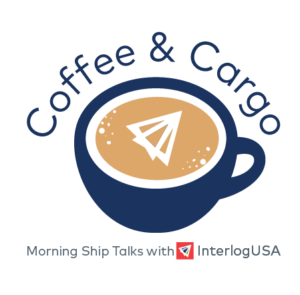Competitive Edge
May 18th, 2022
Stay Current with Interlog’s Weekly Newsletter:
Headlines
- Labor negotiations for a new contract between the International Longshore and Warehouse Union (ILWU) and the Pacific Maritime Association (PMA) continue into the week. Understandably, shippers anxiously await any developments surrounding these talks.
- Courtesy of Freight Waves, April was another record-breaking month for South Carolina Ports and the Port of Charleston. SC Ports handled 264,099 TEUs at its terminals in April. This is 17 percent higher than April of last year.
UPDATE: Notable U.S./Canada Port Congestion as of 05/18/22
- Vancouver: 21 Backlogged Vessels
- New York/Newark: 16 Backlogged Vessels
- Houston: 13 Backlogged Vessels
- Savannah: 12 Backlogged Vessels
- Los Angeles/Long Beach: 10 Backlogged Vessels
- San Francisco/Oakland: 8 Backlogged Vessels
- Charleston: 1 Backlogged Vessels
Courtesy: MarineTraffic
IMPORT: Asia to North America (TPEB)
Recent Developments:
- Carriers have reallocated more ships to USEC services from the USWC.
- Lockdown measures imposed in Shanghai and the subsequent impacts of them remain in play. For a closer look, check out our past newsletter.
- Many predict that demand will spike to elevated levels when Covid-related restrictions ease and the overall situation improves in China.
- Congestion at Los Angeles/Long Beach has alleviated in the time being due to impacts of Covid-19 lockdown measures and restrictions in China.
- However, container dwell time still remains within a range of five to seven days as rail infrastructure struggles to handle volumes.
- The usual suspects—severe congestion, deteriorating schedule integrity, port omissions, and blank sailings—remain contributors to an uncertain market.
Rates: Rates remain relatively elevated compared to pre-pandemic levels. However, USWC-bound sailings are seeing alleviation in rates. Some transpacific carriers have announced GRIs for June to all Canadian and U.S. destinations from Asian and Indian Sub-Continent origins.
Space: Space has opened up in result of China’s Covid-related restrictions, particularly FAK (Freight-of-all-kinds) space on services calling from Shanghai. As noted, before, once the situation in China improves, subsequent surges in demand are expected. In the event of this, space and capacity will tighten yet again.
Capacity: Capacity has also seen some softening due to the same circumstances.
Equipment: Equipment has been relatively easier to come by due to China’s situation as well. However, intermodal systems are still stressed with truck and chassis availability remaining dire.
TIPS: Book at least 3 weeks prior to CRD. Strongly consider premium service and be flexible as it comes to equipment and routing. Additionally, be in contact with suppliers to check up on any Covid-related developments that can affect production.
IMPORT: Europe to North America (TAWB)
Recent Developments:
- USWC ports remain congested. However, wait times for vessels have vastly improved. In some cases, wait times have cut down to even 10 days at Los Angeles/Long Beach ports.
- On the USEC, the Port of Charleston has reaped dramatic improvements to its operations and has significantly decreased its number of waiting vessels offshore.
Rates: Tightened capacity and fully booked vessels have led to increases in rates.
Space: Space remains critical for USEC and USWC.
Capacity: Capacity for both North Europe and Mediterranean services remain gripped as a continuing result of high demand. Port congestion at USWC and USEC ports, while improved, also remain a contributor in capacity issues.
Equipment: Equipment remains available at European seaports. However, inland terminals in Europe are still reporting equipment shortages.
TIPS: Book 5 or more weeks prior to CRD. Shippers are strongly advised to consider premium service for no-roll options and improved reliability for their cargo.
EXPORT: North America to Asia
Recent Developments:
- Congestion remains considerable at some USEC ports—notably, New York/Newark.
- Diminishing schedule integrity is contributing to void sailings, delays, vessel cut-offs at ports, and challenging post earliest return dates.
- Vessel arrivals remain fluid for USWC POLs.
Rates: GRI activity (limited) announced for May. As of now, no announcements for June GRIs.
Capacity: Available capacity remains fluid for USWC POLs.
Equipment: Truck and chassis availability remain causes for concern and has significantly contributed to congestion of the intermodal system.
TIPS: Book 4 to 6 weeks prior to ETD to secure equipment and vessel space.
Did You Know: The Port of Mobile saw a near 40% increase in container volumes throughout the month of April.
While container volume keeps growing, the Port is continuing to invest in infrastructure to keep increasing capacity and efficiency for shippers at the gate.
Source: Container News
Freight News
European shippers of refrigerated cargo are struggling to find enough boxes, as the return of empty dry containers on the Europe-to-Asia route have taken priority
Reefer containers are more complex to ship than dry boxes, and that has appeared relevant to the Europe to Asia trade lane, with many European shippers struggling to find enough boxes for their refrigerated cargo, as empty dry containers are taking priority, the Journal of Commerce states.
The JOC, reports that reefers are competing with dry boxes being returned to Asia, and that those conditions are expected to continue through 2022, with Hapag-Lloyd confirming.
Additionally, rising prices for reefers are not necessarily due to underlying demand, but more so due to an equipment shortage, as many shippers have been struggling to get hold of the containers they need, the JOC reports.
The equipment shortage is apparent due to many constraints and backlogs in the supply chain industry. With that, the priority has been shifted to return empty dry containers back to Asia as quickly as possible, so carriers can take advantage of the huge rates for dry boxes.
Additionally, the JOC notes that there are not fewer reefers, but because turnaround times are so high with vessels being delayed up to 10 days, because yards are full and there aren’t enough reefer plugs to go around.
For a second straight year, Chassis providers are struggling to handle the flow of ocean containers moving on rails into Chicago rail ramps
For a second year in a row, Chassis providers have been struggling to handle the flow of ocean containers moving on rails, into Chicago rail ramps. The reason for this is shippers are holding onto equipment for too long, in addition to some railroads having issues balancing loads moving to and from USWC ports, the Journal of Commerce reports.
BNSF is using auxiliary lots again, to store containers – including Lot W, which has been inaccessible to trucks.
International intermodal volume, (also known as inland point intermodal – IPI), dropped 13 percent year-over-year into the Midwest in the first quarter, the JOC reported.
Furthermore, chassis providers are saying street dwells are remaining too high in Chicago and nationally, also slowing the flow of available chassis – the JOC states.
Interestingly enough, chassis providers say everywhere besides Chicago are doing significantly better than a year ago supplying equipment. The JOC continues to point out that conditions are more fluid now at rail ramps in Dallas, Memphis, Kansas City, and St. Louis, compared to last year.
Sign up for the webinar:

Join us tomorrow at 10am CST for our monthly Coffee & Cargo webinar! We will be joined by a special guest, Mike Babbitt, VP of Global Trade and Supply Chain Product Structuring Sales at Bank of America.
Sign up to secure your spot today, you won’t want to miss it!
Sign up for our
industry answers
Our team works to provide valuable, unique, and relevant content to assist you in finding solutions. Sign up now.

